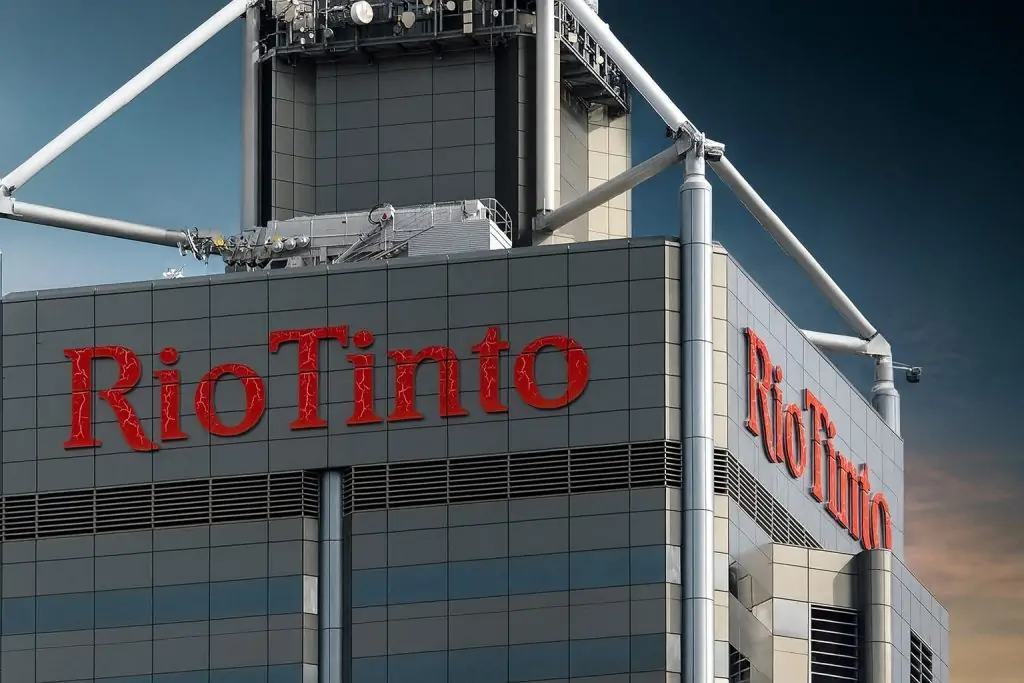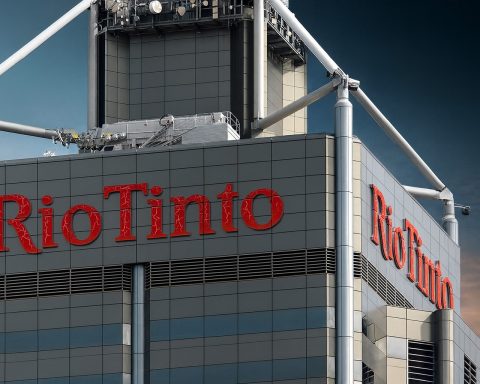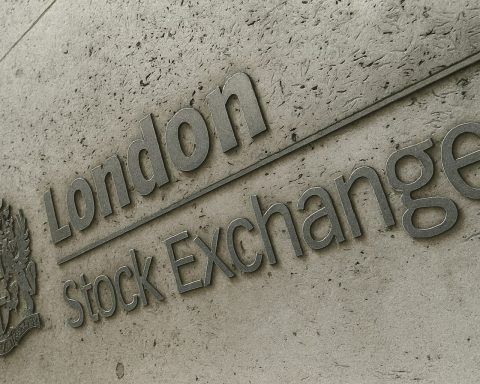Glencore plc (LON: GLEN) ended Friday’s session under pressure, with the FTSE 100 miner’s London‑listed shares slipping back towards the mid‑330p zone as markets digested fresh buyback disclosures, new energy‑transition agreements and lingering headlines from this week’s Century Aluminum stake sale.
Latest real‑time data from Investing.com showed Glencore trading around 337.8p, down roughly 3.2% on the day, with a session range of 332.2p–341.8p. [1] That move extends the stock’s short‑term pullback after a powerful rally earlier in 2025.
Glencore share price today (LON: GLEN) – 21 November 2025
Based on London Stock Exchange data aggregated by Investing.com and other market data providers, Glencore’s key numbers for Friday’s trade are: [2]
- Last price (approx.): 337.8p
- Daily move: about ‑11.2p (‑3.2%) versus Thursday’s close of 349.05p
- Intraday range: roughly 332.2p (low) – 341.8p (high)
- Volume: about 9.7 million shares, around one‑third of Thursday’s heavy 29.3 million turnover
- 52‑week range:205p – 397.4p – Glencore now trades about 15% below its 12‑month high and roughly 65% above the lows. [3]
On a closing‑price basis, Investing.com’s historical data show Glencore at 337.88p on 21 November, versus 349.05p on 20 November, confirming a one‑day decline of around 3.2%. [4] The FT’s technical snapshot earlier in the day flagged the stock slipping below its 50‑day moving average around 338.8p, highlighting a loss of short‑term momentum. [5]
All the key Glencore‑linked news dated 21 November 2025
Several fresh stories on 21 November 2025 intersect with Glencore and help frame today’s share‑price move.
1. Ongoing USD 1 billion buyback programme and fresh “transaction in own shares”
Glencore continues to execute its 2025/2026 share buy‑back programme, under which the company can repurchase up to USD 1 billion of its ordinary shares, with completion targeted before the release of full‑year 2025 results in February 2026. [6]
The programme is being conducted via UBS AG, London Branch, with purchases intended to reduce Glencore’s share capital – bought‑back shares are held in treasury. [7]
On 21 November 2025, a new “Transaction in own shares” notice was posted on the Johannesburg Stock Exchange’s SENS system, confirming another batch of ordinary shares repurchased via UBS. [8] While the JSE announcement focuses on the South African line (ticker GLN), it forms part of the same global buy‑back framework that supports the London quote.
Buybacks typically provide a technical floor under the share price over time, but today’s drop suggests that sector‑wide selling pressure and broader macro concerns are outweighing that support in the short term.
2. Orion–Glencore Prieska copper‑zinc financing moves towards binding stage
In South Africa, Orion Minerals confirmed that its major funding package for the Prieska Copper Zinc Mine (PCZM) is moving closer to a binding agreement with Glencore.
A Mining.com.au report dated 21 November 2025 notes that Orion expects the concentrate offtake and financing arrangements with Glencore to be documented in binding form by mid‑December 2025. This would build on a non‑binding term sheet, signed in September, for US$200–250 million of debt funding and long‑term offtake for copper and zinc concentrates from Prieska. [9]
For Glencore shareholders, the Prieska deal matters because:
- It bolsters Glencore’s copper and zinc pipeline in a key jurisdiction at a time when global copper supply is tight.
- It adds future volumes to Glencore’s marketing division, which thrives on long‑term offtake and trading flows.
While not transformational on its own, the deal reinforces the company’s strategic tilt toward transition metals.
3. Government funding to repurpose Glencore’s West Wallsend coal land in Australia
In Australia’s Hunter Valley, the federal government has announced A$5 million in funding for master plans to repurpose two major coal sites – BHP’s Mt Arthur and Glencore’s Macquarie Coal (West Wallsend) operations. [10]
According to Newcastle Weekly, the money – channelled through the Net Zero Economy Authority (NZEA) with state support – is intended to deliver long‑term visions for these sites as they move toward closure, helping ensure mine land re‑use aligns with community priorities and underpins new jobs. [11]
Lake Macquarie’s mayor highlighted that a master plan for the former Glencore West Wallsend coal mine could become a blueprint for mine‑closure transitions across New South Wales and Australia, underscoring Glencore’s growing role in regional decarbonisation and post‑coal land management. [12]
This announcement doesn’t directly alter Glencore’s near‑term earnings, but it is symbolically important for ESG‑focused investors assessing the group’s approach to mine closure, rehabilitation and “just transition” issues.
4. Discovery Green’s 20‑year renewable power agreement with Glencore
In South Africa, Discovery Green, the renewable‑energy platform of Discovery, discussed its 20‑year renewable power agreements with several leading corporates – including Glencore – in a BusinessTech “Business Talk” feature published 21 November 2025. [13]
Head of Discovery Green Andre Nepgen described how the platform is supplying long‑term, price‑certain energy from utility‑scale renewable plants to top businesses and referenced an agreement to provide Glencore with renewable power as part of South Africa’s broader energy transition. [14]
For Glencore, this type of deal:
- Helps decarbonise its South African footprint, where electricity is often coal‑heavy.
- Can stabilise energy costs at key operations.
- Supports the narrative that miners like Glencore are partners – not just obstacles – in the transition to cleaner grids.
5. Century Aluminum stake cut to 33% still in the headlines
Glencore’s decision earlier this week to trim its stake in Century Aluminum continues to reverberate in the market, with fresh write‑ups appearing on 21 November.
Metals news service Yieh reports that Glencore has reduced its holding in Century from 43% to 33%, locking in gains after a U.S. decision to double aluminium import tariffs to 50% in June triggered a sharp rally in Century’s share price. [15]
The sale:
- Frees up hundreds of millions of dollars of capital (exact proceeds depend on the final pricing in the secondary share offering reported earlier by Reuters). [16]
- Slightly reduces Glencore’s direct exposure to U.S. smelting while maintaining a strategic minority stake.
Investors are watching how that cash will be redeployed – whether into debt reduction, further buybacks, capex on copper projects, or M&A.
6. Transition and social issues: chrome venture retrenchments and mine‑closure debates
Broader coverage this week – including a “This Week in African Mining” roundup – highlights that the Glencore–Merafe Chrome Venture has provided an update on the Section 189 consultation process launched on 1 September, tied to retrenchments and smelter shutdowns in South Africa. [17]
At the same time, Australian outlets such as ABC and the Australian Financial Review have continued to scrutinise the public funding lifeline for Glencore’s Mount Isa copper smelter and Townsville refinery, which are being kept open with government support amid weak smelting economics. [18]
Taken together, these stories underscore that:
- Glencore sits at the front line of energy transition trade‑offs, shutting high‑cost or carbon‑intensive assets while negotiating subsidies or transition plans for others.
- Labour, community and political risks in South Africa and Australia remain material non‑financial factors for long‑term shareholders.
How today’s move fits into Glencore’s recent share‑price trend
From 70% surge to a November pullback
Even after today’s drop, Glencore remains well above its 2025 lows. The Motley Fool UK recently highlighted that the stock had jumped around 70% over six months, recovering from the 200–250p area earlier in the year to the 360–380p band by mid‑November. [19]
However, since 13 November, when Glencore closed around 373.1p, the shares have given back ground. Investing.com’s daily history shows that: [20]
- GLEN has fallen in six of the last seven sessions, including today.
- The price has retreated from 373.1p (13 Nov) to about 337.9p (21 Nov) – a pullback of roughly 9–10% in just over a week.
Short‑term technical analysts at StockInvest.us labelled Glencore a “Sell candidate” from 19 November, noting a cluster of short‑ and longer‑term moving‑average sell signals, a pivot‑top pattern from 13 November and a five‑day losing streak into Thursday’s close at 349.05p. [21]
That bearish near‑term stance contrasts with the longer‑term uptrend and strong rally off 2025 lows, leaving many traders viewing the latest weakness as either a healthy consolidation or the start of a deeper correction, depending on their risk appetite.
Fundamental backdrop: copper, coal and capital returns
Copper output down year‑to‑date, guidance tightened
Glencore’s Third Quarter 2025 Production Report and an accompanying Reuters write‑up on 29 October 2025 remain central to the investment case. [22]
Key points:
- Own‑sourced copper production for the first nine months of 2025 fell 17% year‑on‑year to 583,500 tonnes, driven mainly by lower grades at certain mines.
- Full‑year 2025 copper guidance was tightened to 850,000–875,000 tonnes, down from a prior upper range of 890,000 tonnes.
- Own‑sourced cobalt output rose modestly to 28,500 tonnes, while thermal coal production for the first nine months edged up to 73.5 million tonnes, with full‑year guidance of 92–97 million tonnes. [23]
The company still expects marketing EBIT – the profit from its trading arm – to land around the midpoint of a US$2.3–3.5 billion range for 2025, underlining that trading remains a stabilising earnings pillar even when production is uneven. [24]
MINING.com has also pointed out that Glencore’s copper output is now about 40% below 2018 levels, reflecting asset disposals, grade challenges and project delays across the industry. [25] That longer‑term decline is part of why the market is so focused on deals like Prieska and other copper growth options.
Energy transition: smelter support, renewable PPAs and mine‑closure funding
Today’s news flow reinforces a theme investors have been tracking all year:
- Government support: Australia’s federal government has agreed substantial support packages to keep Glencore’s Mount Isa smelter and Townsville refinery running, rather than closing them outright, given their role in regional jobs and copper supply. [26]
- Renewable energy sourcing: Discovery Green’s long‑term renewable power deal with Glencore illustrates how large industrials are locking in clean power for decades, reducing both carbon emissions and energy‑price volatility. [27]
- Post‑coal land use: The Hunter Valley master‑plan funding for Glencore’s West Wallsend coal site shows policymakers and miners collaborating on mine‑closure and land‑reuse strategies, a key ESG topic for coal‑exposed groups. [28]
All of these elements feed into how ESG‑conscious investors and lenders value Glencore, even if they don’t move the share price tick‑by‑tick.
Capital returns: buybacks plus dividends
In addition to buybacks, Glencore continues to return cash via ordinary dividends.
StockInvest’s dividend data list two 2025 cash distributions so far – 3.96p (paid June) and 3.95p (paid September) – totalling 7.91p per share. [29] At today’s ~338p share price, that implies a trailing ordinary yield of roughly 2.3%, before considering any special distributions. [30]
Combined with up to US$1 billion of ongoing buybacks under the 2025/2026 programme, Glencore remains a capital‑return‑heavy story, which helps support valuation even when earnings are volatile. [31]
Analyst sentiment and valuation: what the market is pricing in
Consensus data from Investing.com UK show that, as of 21 November 2025: [32]
- 18 analysts cover Glencore.
- The consensus rating is “Buy” – 13 Buy, 5 Hold, 0 Sell.
- The average 12‑month price target stands at about 411p, implying roughly 22% upside from the current ~338p level.
- Individual targets span a wide range, from the low‑330s to the mid‑470s, with recent “Buy” recommendations from Citi, Morgan Stanley and Barclays, and a more cautious “Hold” from Berenberg. [33]
This broadly bullish longer‑term view contrasts with short‑term technical services like StockInvest.us, which, as noted, currently flag GLEN as a short‑term sell candidate after November’s pullback and break below support zones around 350p. [34]
For investors, the tension between:
- Cyclical commodity risks and operational challenges (especially in copper and ferroalloys), and
- Attractive capital returns plus long‑term copper/transition exposure,
is what makes Glencore one of the more actively debated large‑cap mining stocks on the London market.
Sector backdrop: miners and commodities under pressure today
Today’s drop in GLEN also needs to be seen in a sector context. Proactive Investors reported that London‑listed mining and oil majors were among the notable fallers on Friday, as commodity prices – from base metals to crude – pulled back and investors trimmed risk exposure. [35]
At the macro level, fresh analysis this week from GIS Reports highlighted that global copper supply chains are under increasing stress, with prices near record highs as governments race to secure material for the green transition. [36] In the long run, that backdrop is supportive for diversified producers like Glencore, but in the near term it also amplifies volatility whenever recession fears or policy shocks jolt the metals complex.
What to watch next for Glencore shareholders
Looking beyond today’s ~338p print, here are the main catalysts and risk factors the market is monitoring:
- Completion of the Prieska financing and offtake deal
- Binding documentation and funding structure for the US$200–250m Orion/Glencore package. [37]
- Progress of the 2025/2026 buyback programme
- Pace of daily repurchases, any changes to the US$1bn envelope, and future guidance on capital returns at the February 2026 results. [38]
- Copper production trajectory into 2026
- Whether operational tweaks, project ramp‑ups and potential acquisitions can stabilise or grow copper volumes after the 17% year‑to‑date decline. [39]
- Regulatory and ESG pressures
- Outcomes of chrome‑sector retrenchments in South Africa, ongoing scrutiny of Mount Isa and Canadian smelter emissions, and mine‑closure planning in the Hunter Valley. [40]
- Commodity price trends
- The path of copper, coal and aluminium prices – and any further trade actions like the U.S. aluminium tariffs that helped trigger the Century Aluminum share rally behind Glencore’s stake sale. [41]
- Listing and strategic questions
- Earlier in 2025, reports suggested Glencore had considered moving or adding a listing outside London to reduce any perceived “UK discount,” even though it ultimately stayed put. Such debates about where the stock should trade most actively could resurface if valuation gaps re‑open. [42]
Bottom line: GLEN at ~338p – consolidation or something more?
At around 337–338p, Glencore now sits: [43]
- Roughly 9–10% below its mid‑November peak,
- 15% under its 52‑week high, but
- Still about 65% above this year’s lows near 205p.
Today’s sell‑off appears driven less by a single, dramatic new headline and more by a combination of factors:
- Sector‑wide pressure on miners,
- Softness in commodity prices,
- Profit‑taking after a strong multi‑month rally, and
- Ongoing digestion of complex transition‑related and portfolio‑management news (from smelter support and mine‑closure funds to the Century Aluminum stake cut and copper output trends).
For long‑term investors, the core Glencore story remains a balance between:
- Attractive capital returns and strategic exposure to copper, coal and trading, and
- Operational, ESG and political risks across a sprawling global asset base.
As always, anyone considering an investment in Glencore should look beyond today’s share‑price moves, review the company’s official reports and independent research, and ensure any decision fits their own risk tolerance, time horizon and financial situation. This article is informational only and does not constitute investment advice.
References
1. uk.investing.com, 2. uk.investing.com, 3. uk.investing.com, 4. www.investing.com, 5. markets.ft.com, 6. www.glencore.com, 7. www.glencore.com, 8. www.moneyweb.co.za, 9. mining.com.au, 10. newcastleweekly.com.au, 11. newcastleweekly.com.au, 12. newcastleweekly.com.au, 13. businesstech.co.za, 14. businesstech.co.za, 15. yieh.com, 16. www.reuters.com, 17. www.miningreview.com, 18. www.abc.net.au, 19. www.fool.co.uk, 20. www.investing.com, 21. stockinvest.us, 22. www.reuters.com, 23. www.reuters.com, 24. www.reuters.com, 25. www.mining.com, 26. www.abc.net.au, 27. businesstech.co.za, 28. newcastleweekly.com.au, 29. stockinvest.us, 30. stockinvest.us, 31. www.glencore.com, 32. uk.investing.com, 33. uk.investing.com, 34. stockinvest.us, 35. www.proactiveinvestors.co.uk, 36. www.gisreportsonline.com, 37. mining.com.au, 38. www.glencore.com, 39. www.reuters.com, 40. www.miningreview.com, 41. yieh.com, 42. www.reuters.com, 43. uk.investing.com










